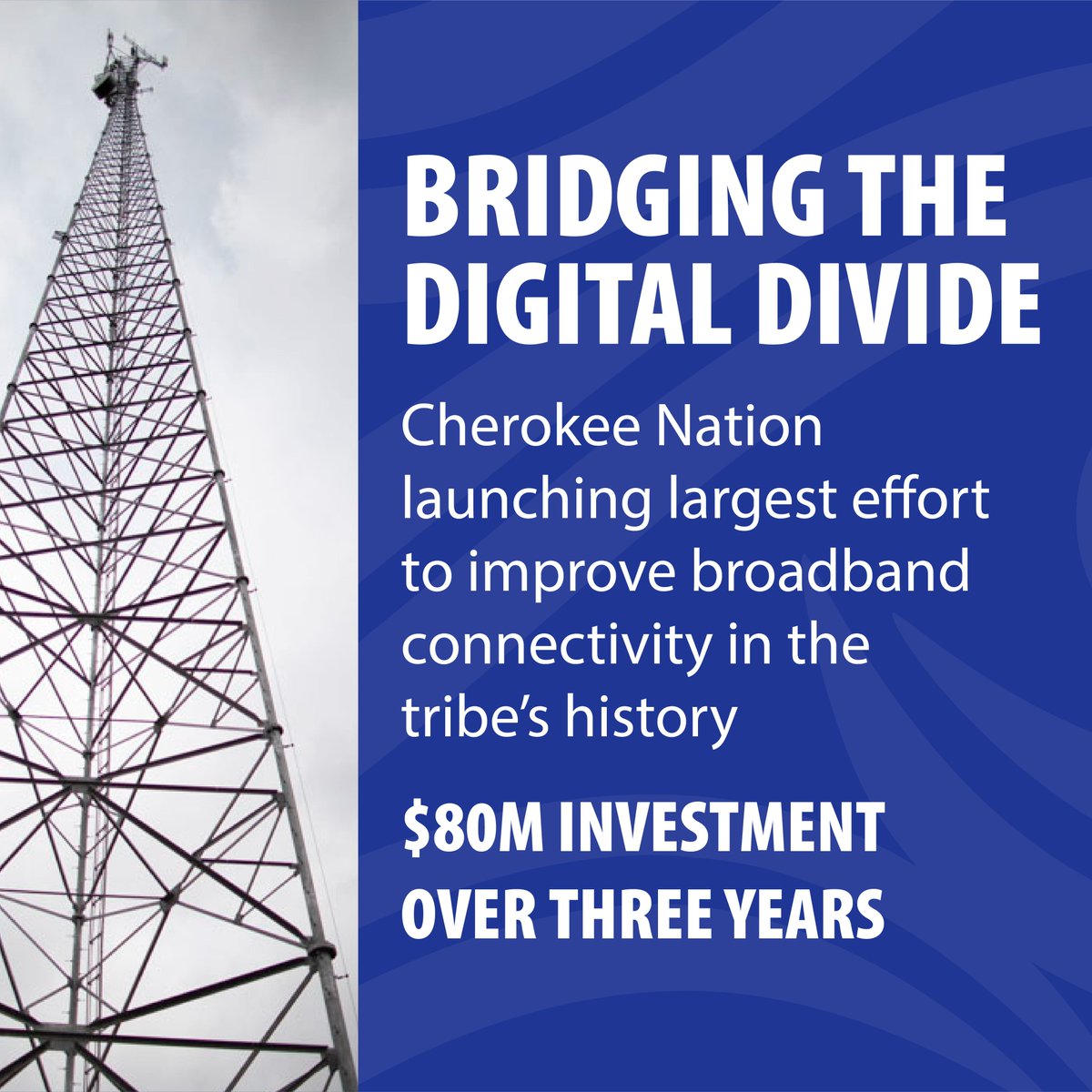
- Details
- By Chuck Hoskin Jr
GUEST OPINION. In rural northeast Oklahoma, the heart of the Cherokee Nation, a transformation is underway. The tribe has launched an $80 million project to build 15 new cell towers to fill gaps in broadband access across the 7,000-square-mile Cherokee Nation Reservation.
This visionary project will address immediate broadband needs and create lasting opportunities in health care, education and business development for Cherokee citizens and our neighbors in communities all over the reservation.
In today’s interconnected world, access to cell service and broadband internet is no longer a luxury; it is a necessity. Most Americans can take those connections for granted, but large parts of rural America and especially Indian Country have lagged behind. We can’t let our Cherokee communities wither on the vine from lack of access.
That’s why we are making the largest effort to improve broadband connectivity in the tribe’s history. We expect to have all towers up and running in about two years. This investment will bring new life and resources to the close-knit, rural communities where the Cherokee language is spoken and Cherokee culture is held most dearly. Families in these communities will no longer have to choose between staying close to their culture and participating in the wider world.
We’ve seen remarkable success already in Delaware County. Last year, we collaborated with AT&T to install a cell tower and provide reliable cell service in the Kenwood community. The beacon of hope that connectivity has brought to Kenwood serves as inspiration for the 16 communities slated for new cell towers in the next couple years.
The new towers will go up throughout Adair, Delaware, Cherokee and Sequoyah counties, with the network also crossing into parts of Mayes County. They will serve the communities of Belfonte, Bell/CC Camp, Brent, Brushy, Chewey, Christie, Dry Creek, Eucha, Greasy, Marble City, Oakhill/Piney, Oaks, Proctor, Tailholt and Vian.
The initiative goes hand in hand with Cherokee Nation's broader efforts to promote digital inclusion. Last year, we collaborated again with AT&T to establish the first Connected Learning Center in Catoosa. That facility – the J.W. Sam-Gadusi building – is providing internet access and educational tools to Cherokees and other Native citizens facing connectivity barriers.

Federal grants from the National Telecommunications and Information Administration’s Tribal Broadband Connectivity Program, the U.S. Department of Interior's Indian Affairs Office of Indian Energy and Economic Development, and funding from the American Rescue Plan Act (ARPA) have been instrumental in making this $80 million initiative a reality.
During the pandemic, when the need for reliable connectivity became so visibly amplified, Cherokee Nation responded by setting up drive-up Wi-Fi locations and distributing thousands of hot spots to students. This new work is simply the latest evolution of that commitment to connectivity. As we empower our rural and underserved communities, Cherokee Nation is building a brighter, more connected future for our citizens in northeast Oklahoma.
Chuck Hoskin. Jr. is the principal chief of the Cherokee Nation.
More Stories Like This
Governor Stitt, it’s raining. Save SNAP.Remembering My Grandma During Native American Heritage Month
HHS Secretary Kennedy to Indian Country: Even During a Shutdown, Your Health Care is My Priority
Finding the Good News: MacKenzie Scott’s Quiet Commitment Amidst the Noise
Martial Law in an American City —1929
Help us tell the stories that could save Native languages and food traditions
At a critical moment for Indian Country, Native News Online is embarking on our most ambitious reporting project yet: "Cultivating Culture," a three-year investigation into two forces shaping Native community survival—food sovereignty and language revitalization.
The devastating impact of COVID-19 accelerated the loss of Native elders and with them, irreplaceable cultural knowledge. Yet across tribal communities, innovative leaders are fighting back, reclaiming traditional food systems and breathing new life into Native languages. These aren't just cultural preservation efforts—they're powerful pathways to community health, healing, and resilience.
Our dedicated reporting team will spend three years documenting these stories through on-the-ground reporting in 18 tribal communities, producing over 200 in-depth stories, 18 podcast episodes, and multimedia content that amplifies Indigenous voices. We'll show policymakers, funders, and allies how cultural restoration directly impacts physical and mental wellness while celebrating successful models of sovereignty and self-determination.
This isn't corporate media parachuting into Indian Country for a quick story. This is sustained, relationship-based journalism by Native reporters who understand these communities. It's "Warrior Journalism"—fearless reporting that serves the 5.5 million readers who depend on us for news that mainstream media often ignores.
We need your help right now. While we've secured partial funding, we're still $450,000 short of our three-year budget. Our immediate goal is $25,000 this month to keep this critical work moving forward—funding reporter salaries, travel to remote communities, photography, and the deep reporting these stories deserve.
Every dollar directly supports Indigenous journalists telling Indigenous stories. Whether it's $5 or $50, your contribution ensures these vital narratives of resilience, innovation, and hope don't disappear into silence.
 The stakes couldn't be higher. Native languages are being lost at an alarming rate. Food insecurity plagues many tribal communities. But solutions are emerging, and these stories need to be told.
The stakes couldn't be higher. Native languages are being lost at an alarming rate. Food insecurity plagues many tribal communities. But solutions are emerging, and these stories need to be told.
Support independent Native journalism. Fund the stories that matter.
Levi Rickert (Potawatomi), Editor & Publisher
